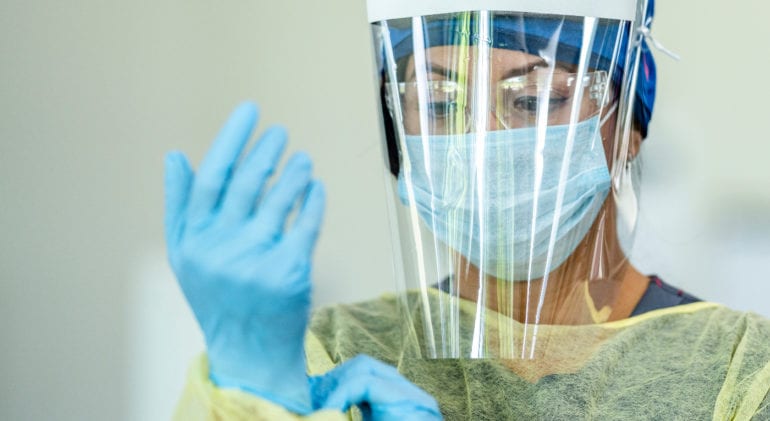Safety is a significant issue for front-line workers like doctors, nurses, and other health care professionals at maximum risk of exposure to infectious diseases. Furthermore, infected health care workers could be a source of disease transmission to patients, family members, and other staff.
Safeguarding these workers is the cornerstone of keeping health care systems functioning effectively. That is why personal protective equipment is essential when treating or working around patients with symptoms or exposure to a viral infection, especially in the era of COVID-19.
What is PPE?
Personal protective equipment (PPE) is specialized clothing or equipment designed to protect nurses against potentially infectious diseases. It creates a protective barrier between the individual and the contaminated object or body. It also protects against direct exposure to blood or fluids.
Common PPE equipment includes:
- Surgical and face masks
- Gloves
- Face shields
- Protective, full-coverage clothing
Importance of PPE for nurses
A study published in the Journal of Medicine revealed that nurses spend about one-third of their time directly caring for patients, as opposed to the 14% spent by doctors. This data implies that the average nurse spends more than twice as much time in close contact with patients, in turn increasing the likelihood of contracting or spreading an infection. This emphasizes the need for adequate PPE options and usage for nurses in particular.
It is also necessary and expected that nurses use PPE even when they are with patients or in an environment not considered infectious or contaminated, as information on a patient’s infection status may not be readily available or accessible.
Requirements of PPE for nurses
The PPE requirements in the medical field are based on the risk of exposure and possible means of transmission. The protection PPE provides also varies depending on the type or amount of equipment used. The WHO currently recommends comprehensive droplet, airborne, and contact precautions for health care workers caring for COVID-19 patients.
For droplet precautions, health care workers should use PPE such as surgical masks and face shields for eye protection. Additionally, the use of long-sleeved, water-resistant gowns and gloves are recommended for contact precaution.
How to put on and take off PPE
The process to put on (don) and take off (doff) PPE is of great importance to protect health care workers from infections, especially in the steps taken to dispose of used PPE.
To start, should wash your hands and ensure you have the appropriate PPE available. Then follow these PPE steps as directed by the CDC:
- Don apron, gown, or other protective clothing.
- Don surgical mask or respirator.
- Don face shield on for eye protection.
- Don protective gloves.
When removing PPE, the correct sequence is as follows:
- Doff gloves first and decontaminate your hands after removing.
- Doff gown, apron, or other protective clothing.
- Doff the face shield.
- Doff surgical mask or respirator.
- Decontaminate hands again.
Nurses should be well-versed in PPE best practices and use. Compliance with PPE equipment and processes ensures nurses can protect themselves, their families, and their patients.
Looking to begin or advance your career in nursing? The Chicago School’s College of Nursing and Advanced Health Professions offers a diverse range of nursing programs from vocational, undergraduate, and graduate level degrees.

